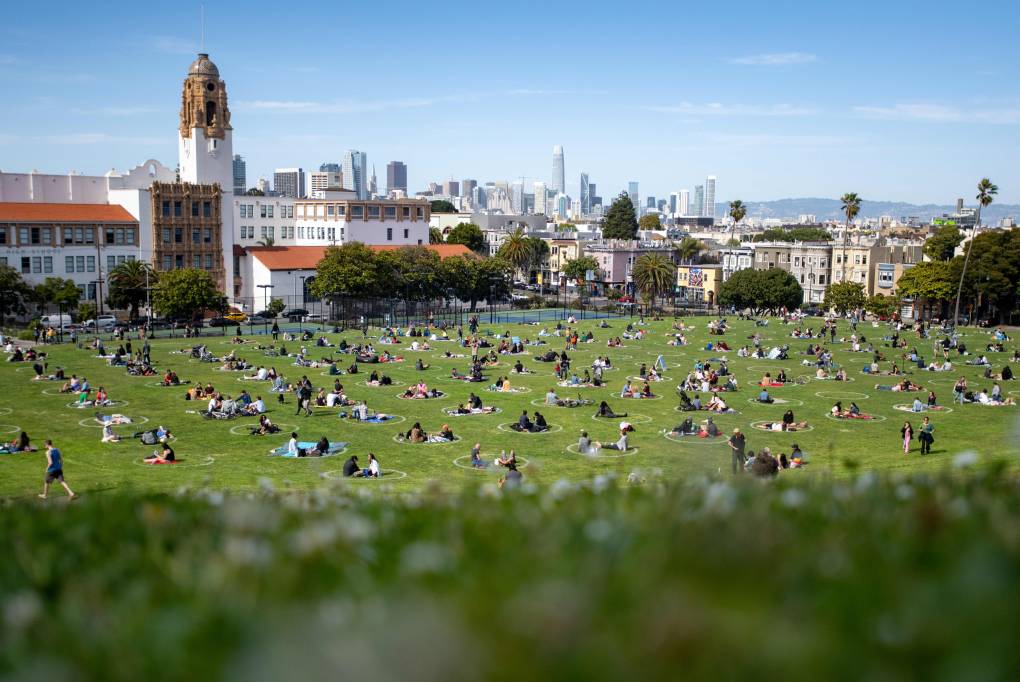It’s no surprise that many people are canceling family Thanksgiving plans outright. But for others wanting to research ways to make informed choices about traveling over the holidays, a new map created by a team at the Georgia Institute of Technology aims to show the risk level of attending an event for every county in the United States, based on how many people would be gathering there.
The COVID-19 Event Risk Assessment Planning Tool allows users to choose an event size and location, and see the percentage risk level that at least one person infected with the coronavirus would be present.
For a Thanksgiving-sized gathering of 10 people, for example, the map projects that on Nov. 17, the likelihood in San Francisco that one or more people present has COVID-19 is 5%. Across the bay in Alameda County, it’s 4%. In Napa County, the risk jumps to 11%.
By default, the map also assumes that there are five times more COVID-19 cases than are actually being reported, based on data from coronavirus antibody surveys as well as increases in testing. (You can also set this assumption — called “ascertainment bias” — to 10:1 rather than 5:1, if you’re curious about areas with far less testing availability).
The COVID-19 Event Risk Assessment Planning Tool
This embedded map displays the risk level for a gathering of 10 people, with an ascertainment bias of 5:1. To adjust gathering size and bias level parameters, explore the full tool here.
The map project was led by professors Joshua Weitz and Clio Andris at Georgia Tech, in collaboration with researchers at the Applied Bioinformatics Laboratory and Stanford University. Andris said that so far more that 3 million people have used the map in the run-up to the Thanksgiving holiday.
The data, which Andris said is updated “very regularly” to reflect new case rates, is drawn from the New York Times’s COVID-19 statistics that show reporting from state and local health agencies.
Using This Map to Make Choices?
What should anyone using this map know, in order to interpret its data in informed way? Andris said it’s important to realize that the percentage risk it shows “is not the percentage of the chance that you might be infected with COVID-19” at an event, but instead reflects the percentage chance that one or more people might have COVID-19 at such a gathering.


